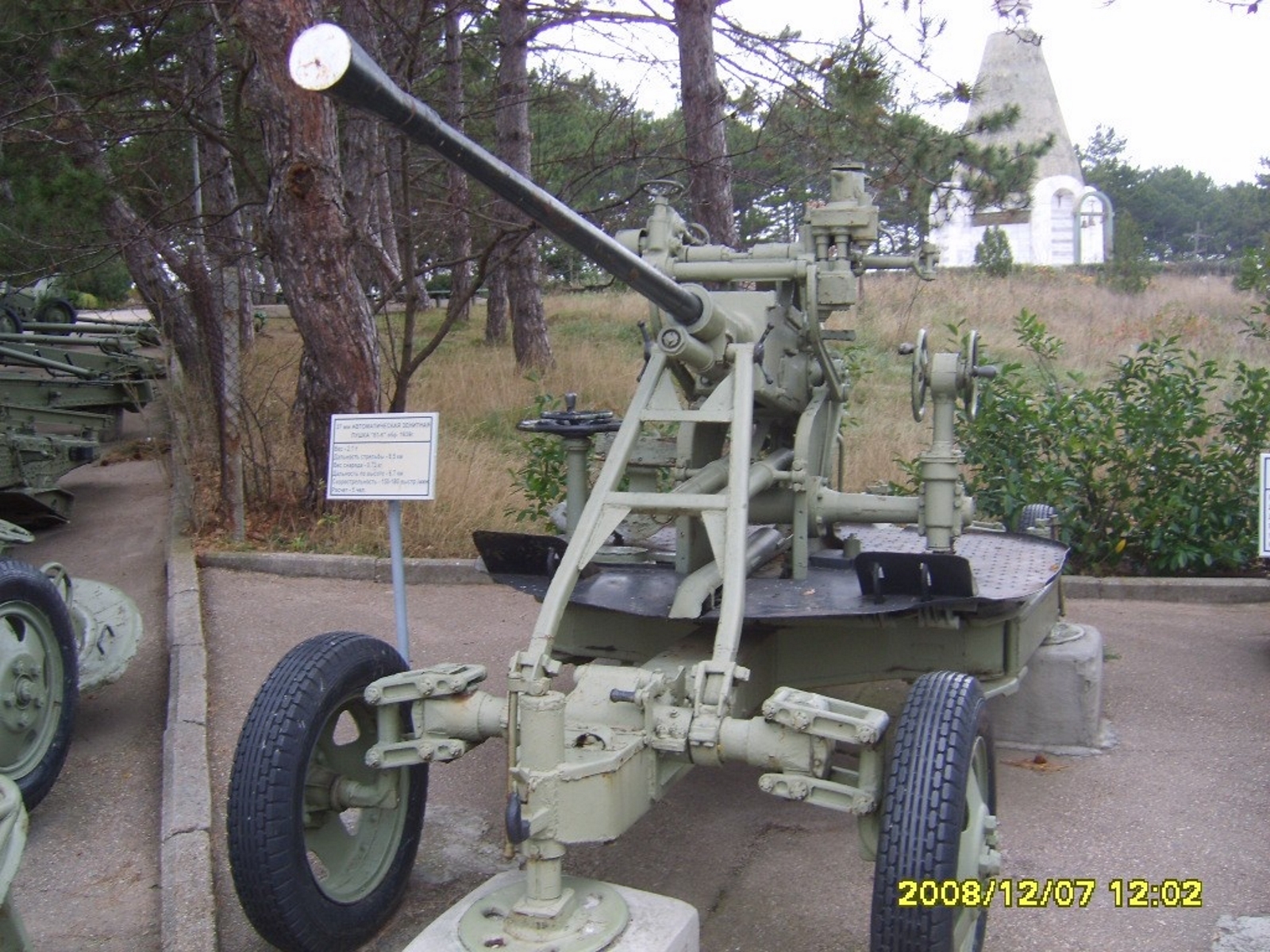
37mm priešlėktuvinis ginklas | |
|---|---|
| Šalies | Sovietų Sąjunga |
| Tipas | Oro gynybos pistoletas |
| Laikotarpį | 1939-1945 |
| Pastatytas | 20.000 |
37 mm automatinis oro gynybos ginklas M1939 (61-K) (rus. 37-мм автоматическая зенитная пушка образца 1939 года (61-К)) buvo sovietų 37 mm kalibro priešlėktuvinis ginklas, sukurtas 1930-ųjų pabaigoje ir naudotas Antrojo pasaulinio karo metu. Žemės versija buvo pakeista sovietų tarnyboje ZSU-57-2 1950-aisiais. Šio tipo ginklai buvo sėkmingai naudojami visame Rytų fronte prieš nardymo bombonešius ir kitus mažo ir vidutinio aukščio taikinius. Jis taip pat turėjo tam tikrą naudingumą prieš lengvai šarvuotus žemės taikinius. 37 mm AD šautuvų įgulos numušė 14 657 "Axis" lėktuvus. Vidutinis 37 mm amunicijos kiekis, skirtas numušti vieną priešo lėktuvą, buvo 905 šoviniai.
Šaltinis: 37 mm M1939 wiki
| 37 mm priešlėktuvinis pistoletas "Walk Around" | |
|---|---|
| Fotografas | Verwolf |
| Lokalizavimo | Nežinoti |
| Nuotraukos | 16 |
Taip pat žiūrėkite:
2007 37 mm priešlėktuvinis pistoletas buvo ginklo rūšis, kurią antrojo pasaulinio karo metu naudojo įvairios šalys. Jis buvo skirtas nušauti priešo lėktuvus mažame ir vidutiniame aukštyje, naudojant didelio sprogimo ar šarvų korpusus. 37 mm kalibras buvo pasirinktas todėl, kad jis pasiūlė gerą pusiausvyrą tarp svorio, snukio greičio, ugnies greičio ir tikslumo. Vokietija, Jungtinės Valstijos, Rumunija ir Sovietų Sąjunga gamino skirtingus 37 mm priešgaisrinių ginklų modelius, kurių kiekvienas turėjo savo savybes ir našumą. Keletas ryškiausių pavyzdžių:
– The 3.7 cm Flak 18/36/37, developed by Rheinmetall in Germany, was a fully automatic gas-operated cannon that could fire up to 160 rounds per minute. It had a three-legged platform mount that allowed 360 degrees of traverse and a maximum elevation of 85 degrees. It was used by the German army and air force, as well as by Romania and Bulgaria.
– The 37 mm gun M1, developed by John M. Browning and Colt in the United States, was an anti-aircraft autocannon that could fire up to 120 rounds per minute. It had a four-wheeled trailer mount that allowed 360 degrees of traverse and a maximum elevation of 90 degrees. It was used by the US army and navy, as well as mounted on half-tracks and PT boats.
– The 37 mm automatic air defense gun M1939 (61-K), developed by the Soviet Union, was an anti-aircraft autocannon that could fire up to 80 rounds per minute. It had a two-wheeled carriage mount that allowed 360 degrees of traverse and a maximum elevation of 85 degrees. It was used by the Soviet army and navy, as well as by China and North Korea.
– The 37 mm gun M3, developed by the United States, was the first dedicated anti-tank gun fielded by US forces in numbers. It could fire up to 25 rounds per minute, using armor-piercing shells that could penetrate up to 25 mm of sloped armor at 500 yards. It had a split-trail carriage mount that allowed 60 degrees of traverse and a maximum elevation of 15 degrees. It was used by the US army and marines, as well as by Britain and France.
The 37mm anti-aircraft gun played an important role in Antrasis pasaulinis karas, providing air defense and ground support for various armies and navies. It was effective against low-flying aircraft, light tanks, armored vehicles, and infantry targets. However, it also faced limitations such as limited range, low accuracy at high altitudes, vulnerability to counter-battery fire, and obsolescence due to the development of more powerful guns and faster aircraft.
Peržiūrėta: 5136
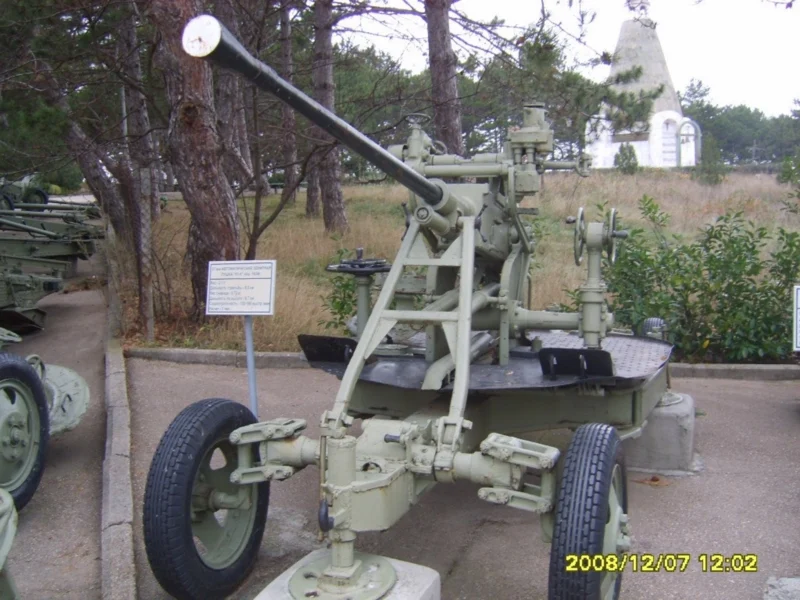
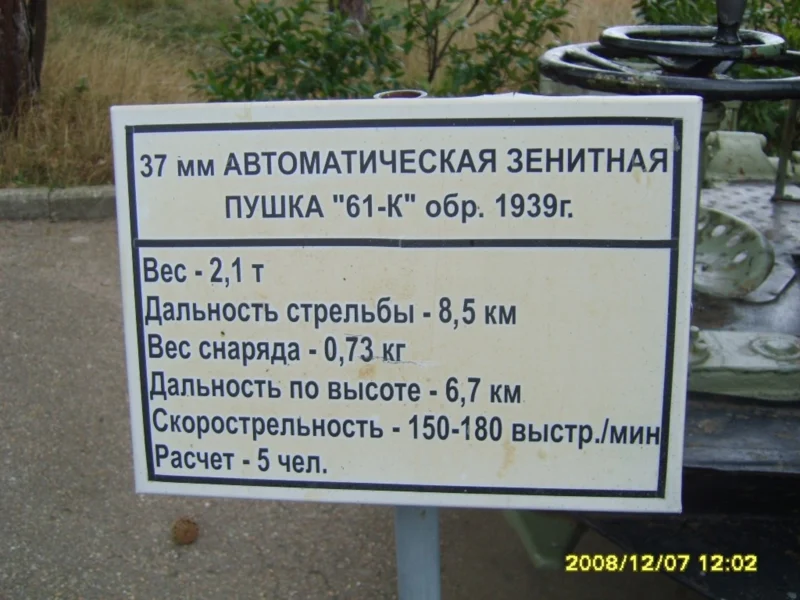
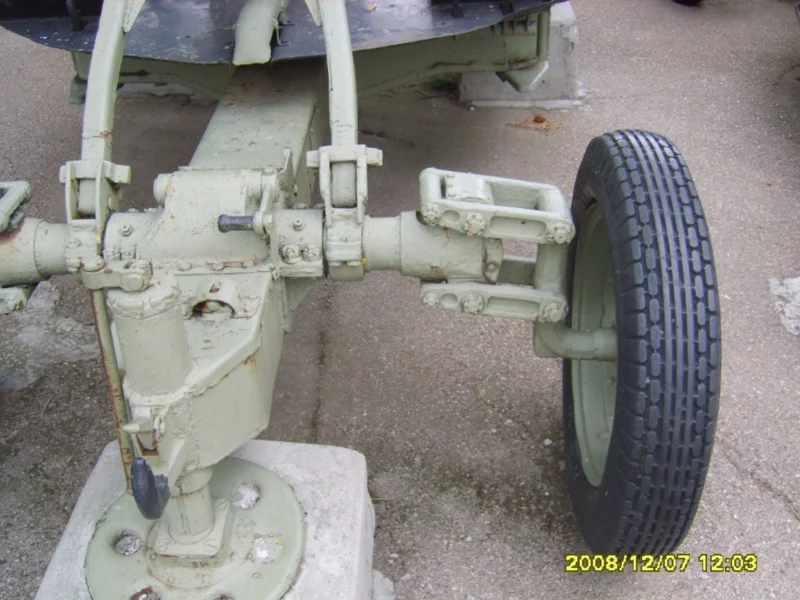
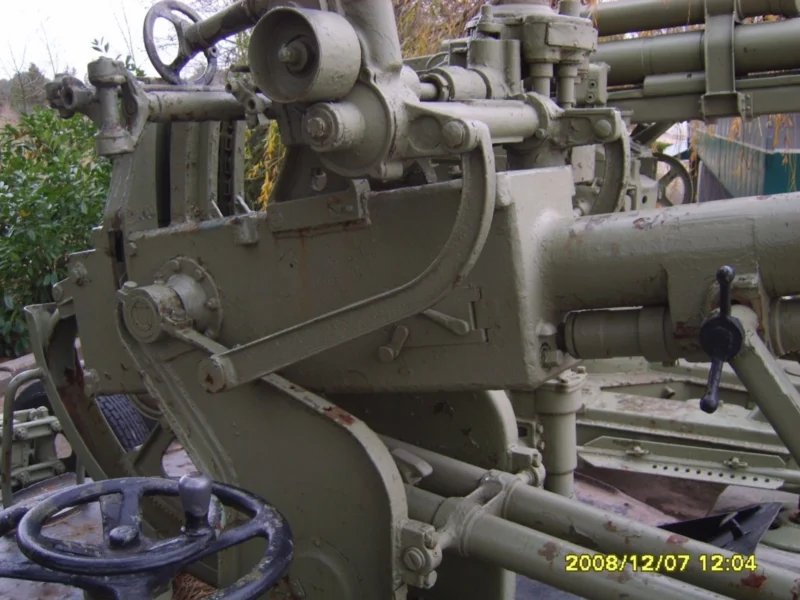
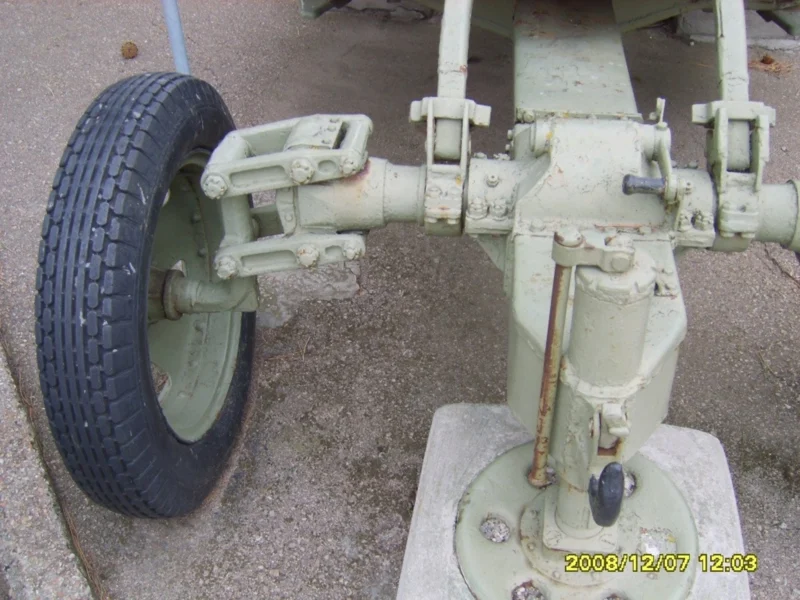

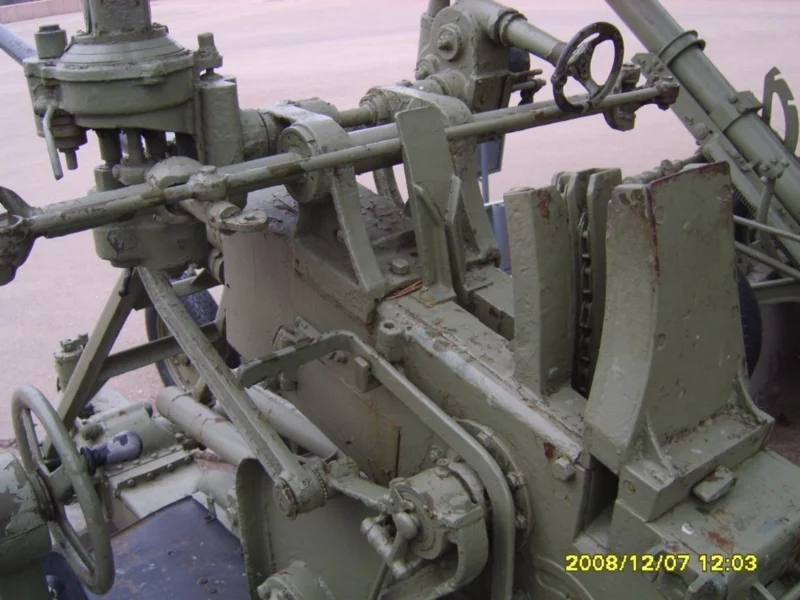
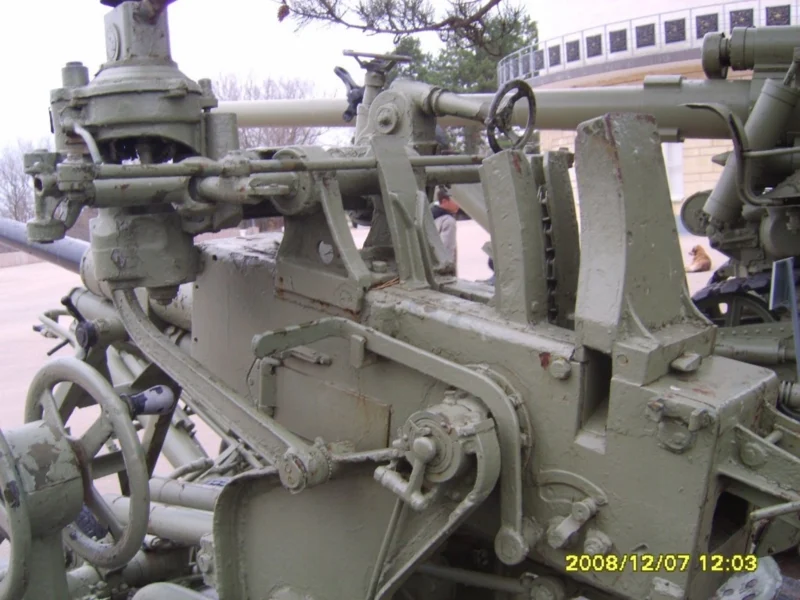
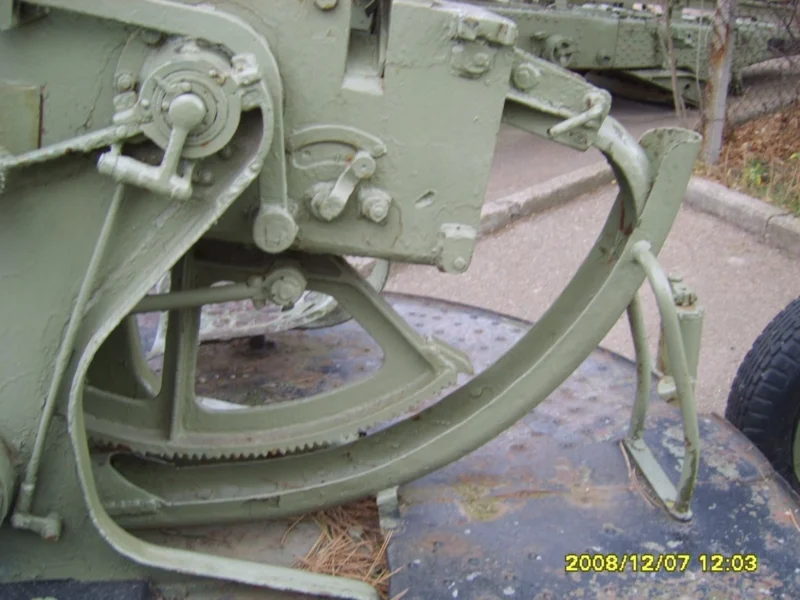


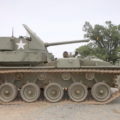
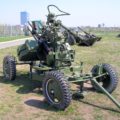
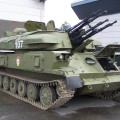
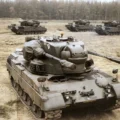
Naujas